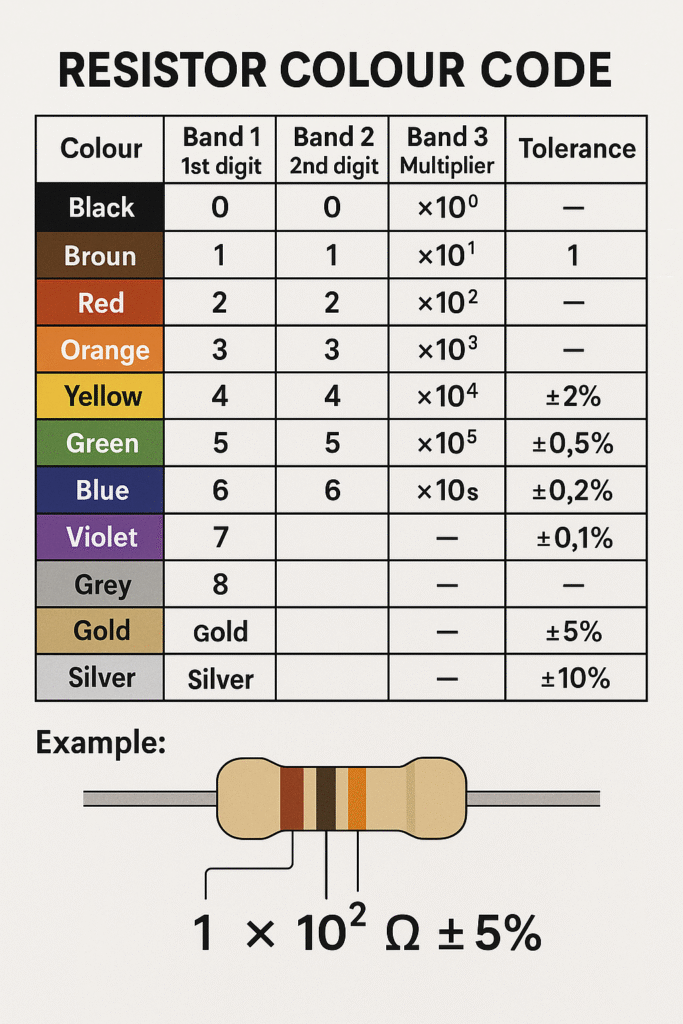Resistor colour code is the method of expressing the value of resistance, tolerance, and sometimes reliability or temperature coefficient of resistors in terms of colours. While other components like capacitors, diodes, and inductors also possess similar coding systems, the colour code system is mainly used for resistors. The system is according to international standards as published in IEC 60062 and is therefore an accepted international system for reading resistance value.
Each coloured band on a resistor represents a number or a multiplier value, based on position. The first bands are digits, with a multiplier, and sometimes a tolerance band. Precision resistors have reliability and temperature coefficient bands, some of them.
Resistor Color Code Calculator
How to Manually Read a Resistor’s colour Code:
First of all, resistors have four, five, or six colour bands, and each band is significant in some way. Knowledge of the purpose of each band is the starting point for deciphering the value of the resistor standing alone.
For a four-band resistor, the first two colours indicate the first two meaningful digits of the resistance, the third colour is a multiplier, and the fourth colour is the tolerance, or how far the actual resistance can differ from the given value.
Assume that you have a resistor with these colours: Red – Violet – Orange – Gold. This is how you interpret it:
Red is equivalent to 2 (initial digit).
Violet is 7 (second digit).
Orange is for multiply by 1,000.
Gold tells you tolerance is ±5%.
So the nominal value is 27 (from the first two bands), and you multiply that by 1,000 to get 27,000 ohms, or 27 kΩ. With a 5% tolerance, the resistance can actually be anything from 25.65 kΩ to 28.35 kΩ.
If you have a five-band resistor, you simply add another significant digit. A five-band resistor with colours Brown – Black – Red – Orange – Brown, for example, dissects as follows:
Brown = 1 (first digit)
Black = 0 (2nd digit)
Red = 2 (3rd digit)
Orange = ×1,000 (multiplier)
Brown = ±1% (tolerance)
Put it all together: 102 × 1,000 = 102,000 ohms or 102 kΩ, 1% tolerance. Six-band resistors are just like five-band resistors but with an extra sixth band to supply temperature coefficient, most often used in precision applications. Even though it is less used for beginners to work with six-band resistors, the concept is the same.
Resistor colour Code Table

The resistor colour code may seem daunting at first, but once you know it, it is a great and handy time-saver when working with electronics. Whether you are reading a straightforward circuit or constructing a complex design, you ought to be able to interpret these small strips of colour. Stay connected with Electronicsmith.com for more tutorials, guides, and DIY projects that will ignite your electronics hobby even more.